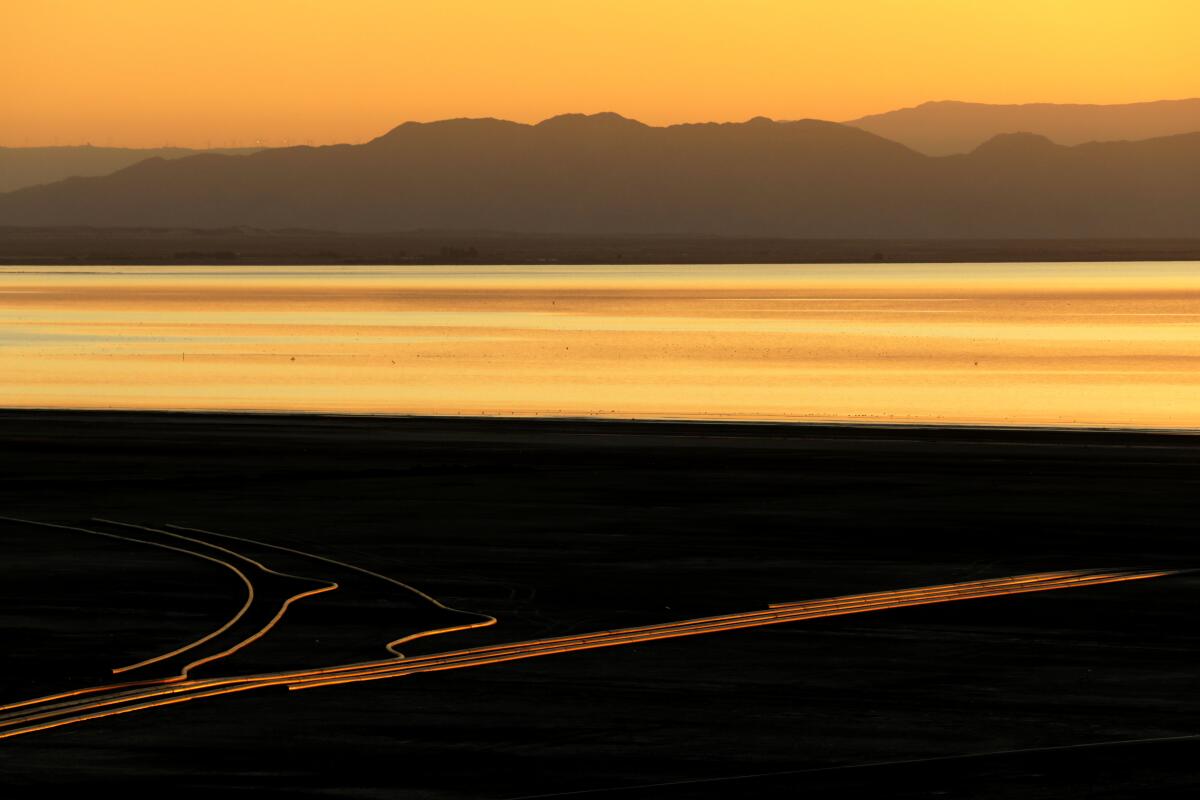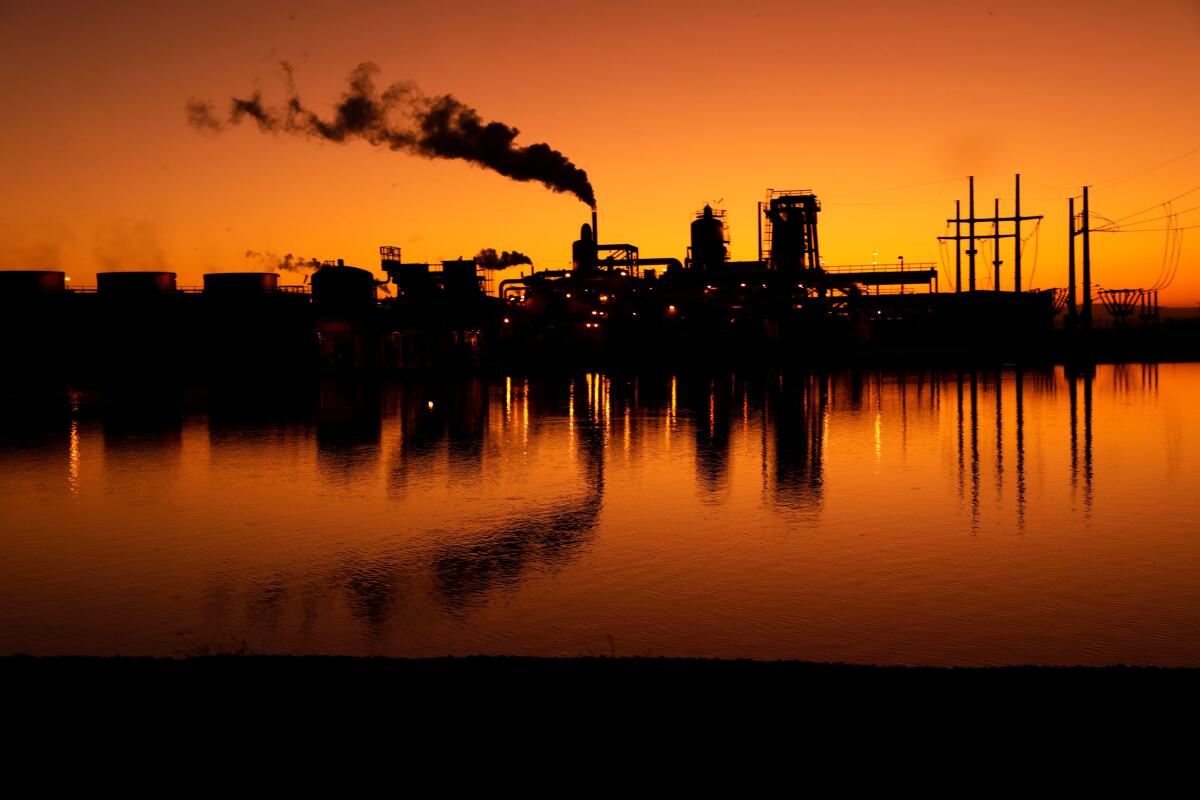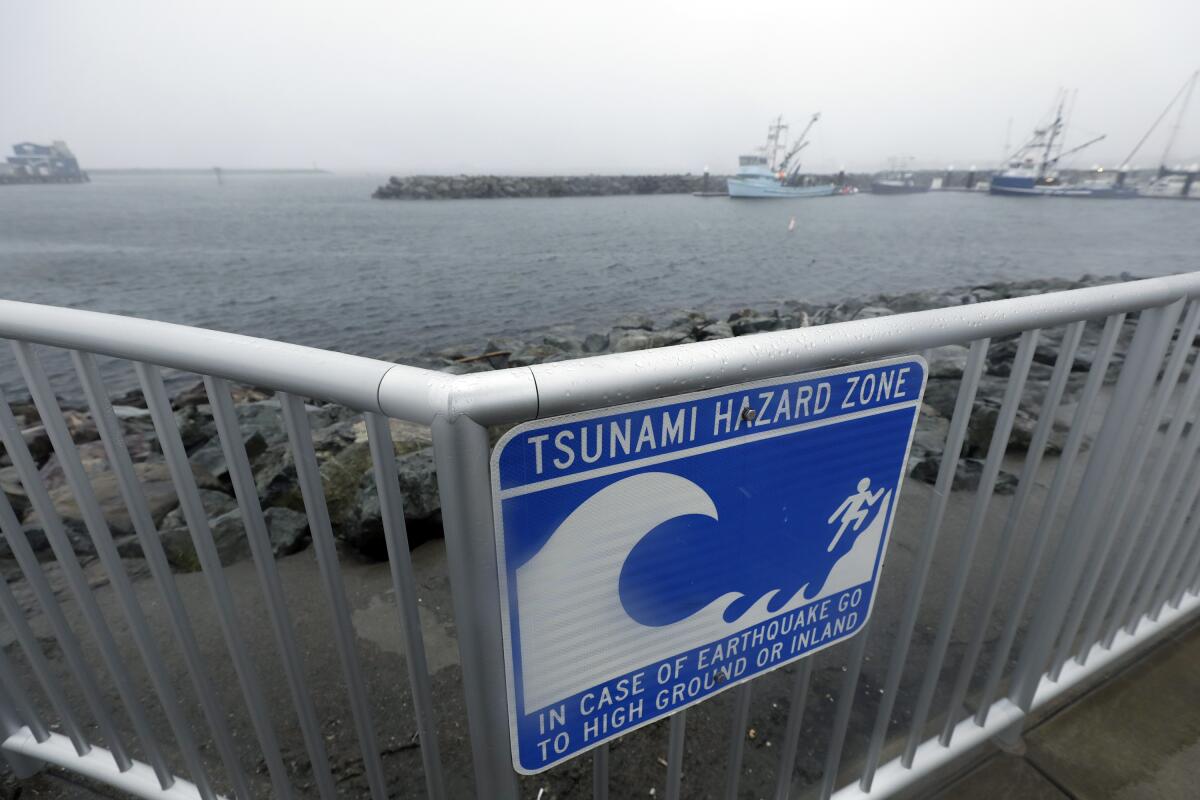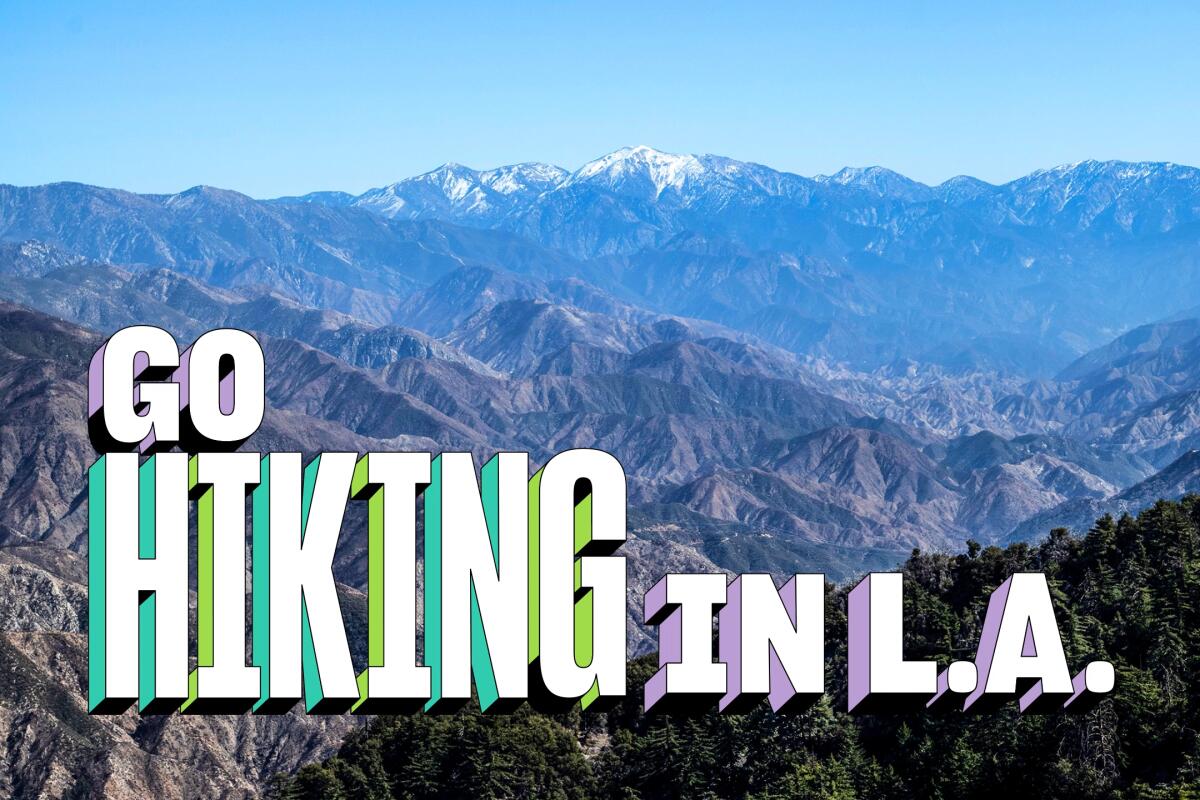The race is on to strike ‘white gold’ at California’s Salton Sea

This is the March 18, 2021, edition of Boiling Point, a weekly newsletter about climate change and the environment in California and the American West. Sign up here to get it in your inbox.
There are few places in California, maybe anywhere, weirder or more wonderful than the Salton Sea.
It’s a sparkling blue oasis in the state’s southeastern corner, framed by harsh desert, jutting mountains and seemingly endless green farm fields. Its modern incarnation was created more than 100 years ago, when the swelling waters of the Colorado River overran an agricultural canal. Now it’s drying up, spewing harmful dust into the Imperial Valley’s already badly polluted air.
There are countless stories to be told around the Salton Sea. To me, one of the most fascinating is about lithium.
Sometimes known as “white gold,” this tiny chemical element — it’s the lightest metal on the periodic table — is a key ingredient in the lithium-ion batteries so important for storing solar and wind energy, powering electric cars and keeping our cellphones fully charged. And there’s loads of it dissolved in the underground brine deep beneath the southern end of the Salton Sea.
That super-heated underground fluid — which has no connection to the waters of the Salton Sea — has been used since the 1980s to generate climate-friendly electricity. The steam rising from 11 geothermal power plants can be seen from many miles away. For decades, those plants have tried without success to profitably extract lithium and other valuable metals from the brine.
Toward a more sustainable California
Get Boiling Point, our newsletter exploring climate change, energy and the environment, and become part of the conversation — and the solution.
You may occasionally receive promotional content from the Los Angeles Times.
In a world rocked by climate disruption, success may finally be around the corner.
I wrote about the increasingly bright prospects for Salton Sea lithium extraction in October 2019. Today, I’ve got several updates on the companies trying to make the Imperial Valley the first major source of North American lithium production — including the entrance of some powerful new players.
Let’s start with Controlled Thermal Resources, an Australian firm that I first wrote about in 2016.
It’s been nearly a decade since the last new geothermal plant was built at the Salton Sea, and Controlled Thermal might build the next one. The company says it began construction on two well pads in February, with plans to drill test wells in the next few months. Here’s a photo of the work, taken this week by Chief Executive Rod Colwell:
Controlled Thermal has a contract to sell geothermal power, but lithium production has been its major pitch to investors. The firm doesn’t yet have an agreement to sell battery-grade lithium hydroxide — that’s when we’ll know if it’s really likely to succeed — but Colwell tells me they’re close enough that they felt comfortable starting to spend money moving earth around. They’re now raising a final $37 million toward the overall $500-million price tag to show “bankable feasibility,” he said.
Colwell has expressed confidence before; when I first met him, he told me he hoped to get a geothermal plant built by 2020, which obviously didn’t happen. But when he says this time is for real, he may be right. President Biden’s ambitious climate change plans, coupled with the growing number of automakers pledging to stop selling gasoline-powered cars, have led to a surge of interest in new domestic sources of lithium. Colwell says his company has been on the receiving end of that interest.
“After eight years,” he said, “suddenly overnight things started to come together.”
Next, let’s look at the newest entrance in the Salton Sea lithium race: TerraLithium.
This company is a 50-50 joint venture between a start-up, All American Lithium, and a subsidiary of Occidental Petroleum Corp., one of the biggest U.S. oil producers. That may sound straightforward, but there’s a great deal of intrigue beneath the surface.
All American is the latest iteration of a company that originally formed to acquire the assets of Simbol Materials, which developed a much hyped and highly secretive lithium extraction process. Simbol’s technology so impressed Elon Musk that Tesla offered to buy the startup for $325 million, as I reported in 2016. But the deal fell apart, and a few months later Simbol went bust.
Despite that high-profile failure, a string of subsequent entrepreneurs have been similarly wowed by whatever Simbol figured out. TerraLithium is led by former Shell Oil Co. CEO Marvin Odum. Another prominent investor is country music star Clay Walker.
I asked Odum why his company is capable of proving the commercial viability of Simbol’s technology where others have failed. He pointed to the engineering expertise and project management experience brought by his team and by Occidental.
“I think one of the problems with the industry out there in the past has been the overpromising and the hype,” he said.
Here’s a photo, courtesy of the Imperial Irrigation District, of Odum and Walker visiting with Imperial Valley officials in October. That’s Odum in the middle, wearing a black fleece sweater; Walker is third from left, sporting a white shirt and a hat:
OK, time for prospective lithium company No. 3: EnergySource.
Geothermal companies have built hardly any plants in California over the last 20 years, since the energy they produce is much more expensive than solar and wind power. Utilities and regulators are giving the technology a second look, though, as they begin to see the value of a climate-friendly electricity source that can generate around the clock, not just when it’s sunny or windy.
EnergySource was ahead of the game, opening a new geothermal plant in 2012 after convincing an Arizona utility to buy the power. Now the company says it’s ahead of the game on lithium, too. It’s negotiating sales agreements and expects to start construction around the end of this year on a full-scale lithium extraction plant, Chief Executive Eric Spomer tells me.
“We’re rolling. All lights are green. We’re done with all our piloting,” he said.
When I last wrote about EnergySource’s lithium plans, I described the company’s project as costing $350 million; Spomer now says it will be “north of half a billion.” He also notes that the power plant was acquired last year by Macquarie Group Ltd., an Australian investment bank, from previous owners including Chevron Corp. and New Zealand electricity generator Mercury NZ Ltd.
Another issue worth mentioning is the long-running tension between EnergySource and Simbol Materials’ successors.
The two companies were partners once, but the relationship soured after Simbol’s collapse. In their latest conflict, EnergySource challenged several patents now held by TerraLithium, essentially arguing its competitor is locking up rights to common mineral-extraction techniques. The U.S. Patent and Trademark Office disagreed, rejecting the last of those challenges this week.

Last but not least is Berkshire Hathaway Energy, which is controlled by the legendary investor Warren Buffett.
Berkshire owns the other 10 geothermal plants at the Salton Sea and has made a number of efforts over the years to produce valuable metals. No luck so far, but the company is still trying. It won a $6-million grant from the California Energy Commission last year to fund a lithium demonstration plant. In January, it added a $14.9-million grant from the federal Department of Energy.
The grants require Berkshire to spend about $19 million of its own money, bringing the total outlay to nearly $40 million.
Berkshire’s vice president for government relations, Jonathan Weisgall, tells me they’re no longer working with Lilac Solutions, an Oakland lithium-extraction startup backed by Bill Gates (although Lilac is still working with Controlled Thermal). Berkshire’s extraction process doesn’t require significant new technology, Weisgall said, although it does involve converting lithium to a battery-grade product via clean electricity rather than chemical reagents, in hopes of reducing costs and environmental impacts.
“If, God forbid, it doesn’t work, we’ll have to work with something else. But we’re pretty confident it will work,” he said.
Weisgall has a deep appreciation for the Imperial Valley; he originally worked for CalEnergy, which owned the Salton Sea geothermal plants before Berkshire acquired them in 2000, giving Buffett his first toehold in the energy industry. Weisgall’s spent a lot of time in Imperial and badly wants to see the place become a lithium hub, even if some other company gets there first.
“It’s a race, but it’s a race that can have a lot of winners,” he said. “If the world demand is going to increase as rapidly and greatly as predicted, there should be room for all suppliers.”
State officials share the same vision. Last month, they held the first meeting of the Lithium Valley Commission, with a goal of creating jobs in Imperial and fueling the clean energy transition, as Julie Cart explained in a story for CalMatters. Part of the attraction is the expectation of minimal environmental impacts, unlike in other parts of the world where lithium is produced.
Biden, too, is poised to make domestic lithium production a priority. The president has already ordered a review of supply chains for critical minerals, including those used in electric car batteries, as my colleague Chris Megerian reports.
So will the Salton Sea lithium dream come true? After seven years of writing about the possibility, I’ll believe it when I see it. But for now, the signs are good. As soon as somebody actually agrees to buy lithium, I’ll let you know.
For now, here’s what’s happening around the West:
TOP STORIES
Deb Haaland is now the U.S. Interior secretary. It took a few months, but the former New Mexico representative was confirmed by the Senate with four Republican votes. She’s the first-ever Native American to serve in a president’s Cabinet; my colleague Anna M. Phillips asked five Indigenous leaders what they want to see from her, with answers ranging from renewable energy on tribal lands to broadband internet. Anna also wrote about Michael Regan’s confirmation to lead the Environmental Protection Agency.
Tribes and conservationists are fighting plans for a gold mine just outside Death Valley National Park. In his story for The Times, Louis Sahagún describes the area proposed for mining as “a rugged, nearly roadless chunk of desert terrain teeming with wildlife.” Tribal critics hope their concerns will be taken seriously by the Biden administration, where a growing number of Native Americans have been appointed, including several to key environmental jobs, as Lynda V. Mapes reports for the Seattle Times.
An L.A. Times investigation finds that federal prosecutors in Los Angeles are avoiding prosecuting environmental crimes by striking deals with accused polluters more than anywhere else in the country. Here’s the story by Anna M. Phillips, who finds that a deal not to pursue criminal charges against Exide Technologies over pollution from a dangerous industrial facility was not an isolated event. In another story of industrial pollution harming a low-income community, the Desert Sun’s Janet Wilson reports that activists have sued the Los Angeles Fire Department for not ordering the shutdown of idle oil wells in South L.A.
AROUND THE WEST
New research finds that poorer, more Latino communities across the Southwest are enduring worse extreme heat than their wealthier, whiter counterparts. The poorest 10% of neighborhoods are 4 degrees hotter on average than the wealthiest neighborhoods in the same areas, with some of the worst disparities in Los Angeles, Ian James reports for the Arizona Republic.
The Los Angeles Department of Water and Power will need to keep providing irrigation water to ranchers near Mammoth Lakes. A judge has ordered the city to scrap plans to cut off the water, at least until it conducts an environmental review, per my colleague Louis Sahagún. For additional background, here’s Louis’s story about the dispute from earlier this year, which explains how this all stems from the long history of Los Angeles secretly scooping up water rights in other parts of the state.
Climate advocates see Montana’s Yaak Valley as a test for President Biden’s commitment to reducing emissions and protecting ecosystems. The U.S. Forest Service has long prioritized logging, and under President Trump the agency planned to allow commercial timber harvesting in what Judy Fahys, writing for Inside Climate News, describes as “one of the Lower 48’s wildest places.” Now activists are pressing the Biden administration to reverse the logging project’s all-but-finalized approval.
POLITICAL CLIMATE

A broken water pipe in a Maryland suburb took down the U.S. tsunami detection system for nearly a week. That sounds crazy, but it is absolutely true, as my colleague Anna M. Phillips reveals in an eye-popping scoop. The National Oceanic and Atmospheric Administration says it’s implementing a solution to make sure this doesn’t happen again. But the whole thing is a serious gut check about our readiness as a country for the worsening weather extremes being wrought by climate change.
Construction has stopped on Trump’s border wall, but will any of it be removed? The Desert Sun’s Mark Olalde and Jay Calderon journeyed to the Jacumba Wilderness to see the impact on pristine habitat, desert aquifers and Kumeyaay prayer sites.
The California Coastal Commission could decide today whether off-roading will still be allowed at Oceano Dunes. Louis Sahagún has been tracking the conflict over coastal protection at the only state park that allows off-roaders to drive on the beach. Here’s his latest update, which explores how golf ball-sized shorebirds could be affected by the commission’s decision.
THE ENERGY TRANSITION
The next big battle over the future of rooftop solar in California is underway. Utility companies, the solar industry and consumer advocates have filed their proposals for the next version of net metering, the state program that compensates solar-powered homes and businesses for the electricity they generate, as Rob Nikolewski reports for the San Diego Union-Tribune. A decision is still months away. Unsurprisingly, the utilities want state officials to reduce compensation; solar companies do not.
Southern California Edison is out with a new report (mandated by legal settlement) looking at options for storing nuclear waste from the shuttered San Onofre power plant. Spoiler alert: None of the options are great, short of the federal government finally building a permanent repository as it promised to do long ago. Here’s the story, again from the U-T’s Rob Nikolewski.
The major public relations firm Edelman pledged to fight climate change and never work with climate deniers. But that didn’t stop them from accepting more than $4 million from an oil industry trade group so aggressively opposed to climate action that Shell and BP recently dumped it, as Zahra Hirji and Kendall Taggart reveal for BuzzFeed News. To me, the most telling part of this story is that Edelman — whose business is spinning stories to make companies look better — declined to comment.
ONE MORE THING

If you follow me on Twitter, you know I love to hike. So I was thrilled to see my Times colleagues publish this comprehensive guide to hiking in Los Angeles. One of my favorite features was Mary Forgione’s roundup of the region’s 50 best hikes, which reminded me I still haven’t done the Marion Mountain route to Mt. San Jacinto. That’s going at the top of my post-pandemic to-do list.
I also enjoyed Christopher Reynolds’ piece on the Bridge to Nowhere in the San Gabriel Mountains, and this rundown of the critters you might meet on Southern California trails. Did you know that a flock of hummingbirds is called a “charm”? I did not!
Anyway, I’ll be referring back to the hiking guide again and again. If you want a copy of the gorgeously designed print version, you can buy it online here. And be sure to sign up for Mary’s excellent weekly newsletter on all things outdoors, The Wild.
We’ll be back in your inbox next week. If you enjoyed this newsletter, please consider forwarding it to your friends and colleagues.




